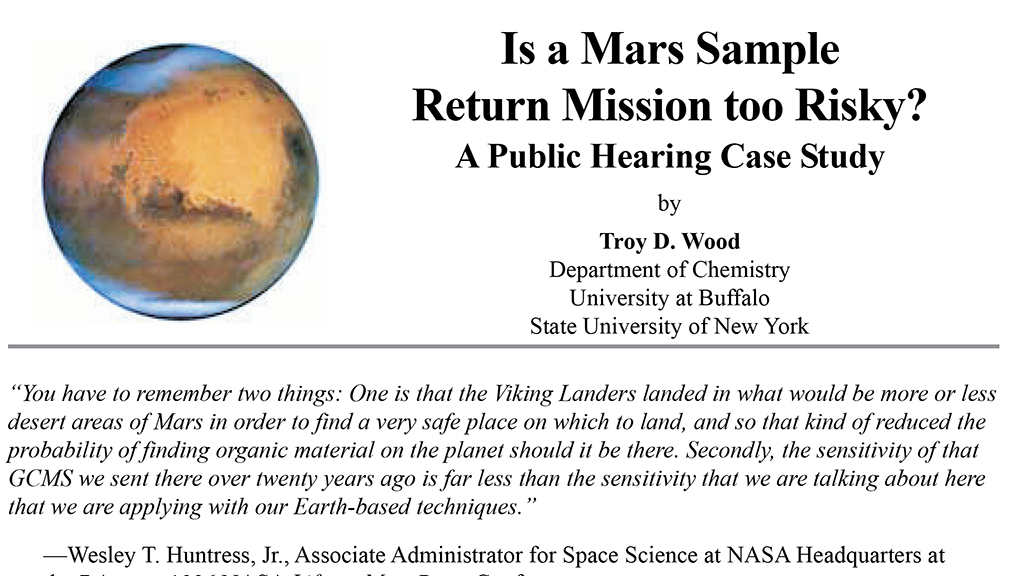Abstract
Following a public hearing format, this case study allows students to explore the scientific and public policy issues surrounding the advisability of a return mission to Mars for further sampling and, more generally, the question of whether or not there is life on that planet. The case was developed for a non-science majors course called “Great Discoveries in Science” and serves to illustrate the scientific method and the importance of interdisciplinary efforts in scientific research.



